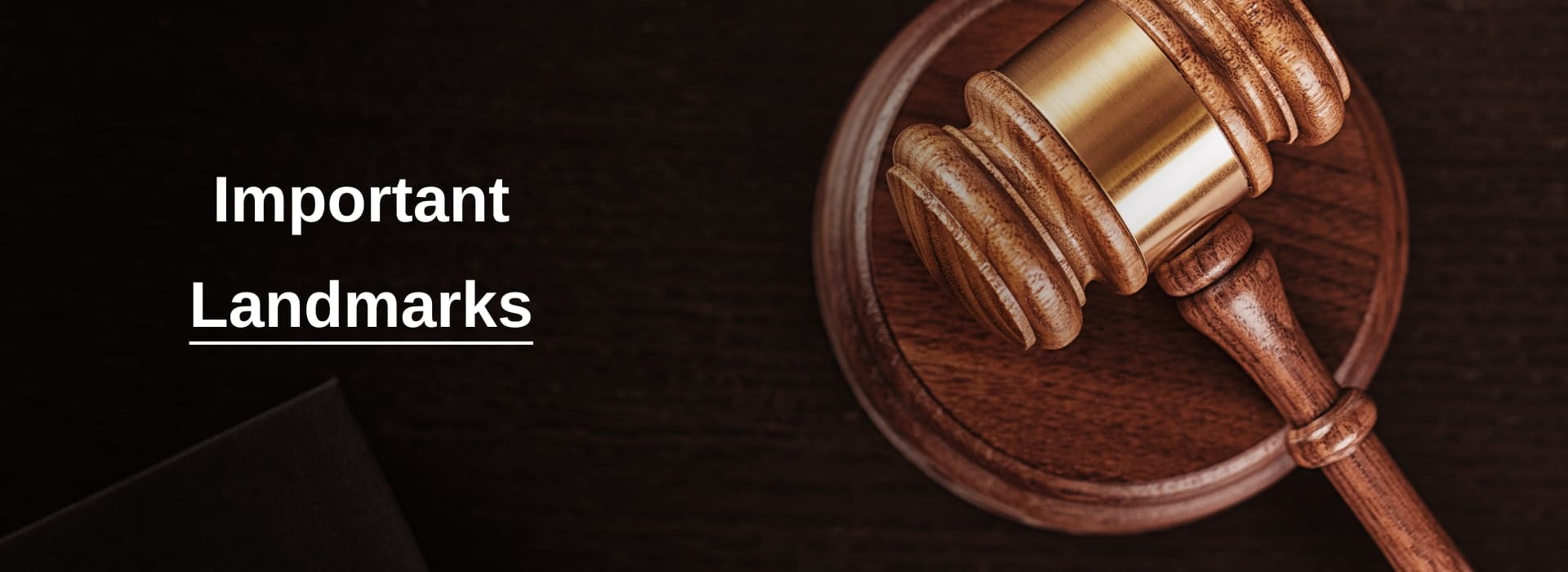
Important Landmarks Of Indian Laws
1. Ayodhya Verdict (2019)
Details: Resolved the contentious dispute over the Ram Janmabhoomi-Babri Masjid site.
- Outcome: The disputed land was awarded for a Ram temple; a separate 5-acre plot was allotted for a mosque.
- Impact: Demonstrated judicial capability in addressing sensitive religious matters while maintaining national harmony.
2. Right to Privacy Judgment (2017)
Case: Justice K.S. Puttaswamy vs Union of India.
- Verdict: Recognized privacy as a fundamental right under Article 21.
- Impact: Influences policies related to digital data, surveillance, and personal liberty.

3. Decriminalization of Section 377 (2018)
- Outcome: Decriminalized homosexuality, striking down parts of Section 377 of the IPC.
- Impact: Landmark victory for LGBTQ+ rights, ensuring equality and personal liberty.
4. Vishaka Guidelines (1997)
- Case: Vishaka and others vs State of Rajasthan.
- Details: Established mandatory guidelines to prevent workplace sexual harassment, later codified in the POSH Act, 2013.
- Impact: Pioneered workplace safety for women in India.
5. S.R. Bommai Case (1994)
Details: Strengthened democracy by limiting arbitrary dismissal of state governments under Article 356.
- Verdict: Judicial review required for such dismissals.
- Impact: Reinforced federalism and safeguarded state autonomy.
6. Maneka Gandhi Case (1978)
Case: Maneka Gandhi vs Union of India.
- Details: Expanded the scope of Article 21 to include personal liberty, dignity, and fair procedure.
- Impact: Ensured laws must pass the test of fairness and non-arbitrariness.

7. Kesavananda Bharati Case (1973)
Details: Introduced the Basic Structure Doctrine to prevent unconstitutional amendments to the Constitution.
- Impact: Protected the core democratic principles of the Indian Constitution.
8. Judges Transfer Case (1981)
Details: S.P. Gupta vs Union of India established judicial independence in appointments and transfers.
- Outcome: Led to the evolution of the collegium system, reducing political interference.
9. Right to Constitutional Remedies (1950)
Details: Article 32 allows citizens to approach the Supreme Court directly for protection of fundamental rights.
- Impact: Acts as a lifeline for democracy, empowering citizens to seek justice.
10. Establishment of the Supreme Court (1950)
Details: Formally inaugurated on January 28, 1950.
- Impact: Became the apex court and protector of constitutional values, ensuring justice for all.